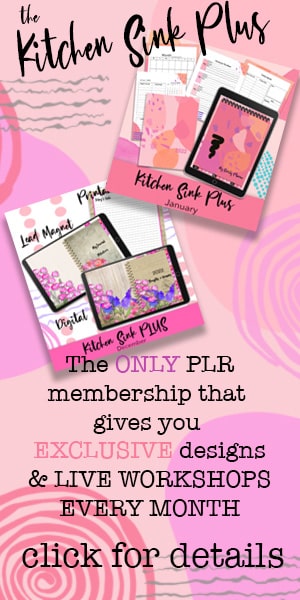10 Ways to Boost Your Blog’s SERP Ranking
10 Ways to Boost Your Blog’s SERP Ranking
There is nothing more disheartening than working for months (or even years) on a niche blog, only to find that your efforts have failed in getting it indexed and ranked on page one of the SERPs (search engine results pages).
But this very scenario is what happens to most bloggers, unfortunately. Only those who make a proactive effort to determine what will work better can reverse the damage done of having their site buried in the SERPs.
Even if you published hundreds of blog posts in previous years, it is not too late to turn things around. The great thing about blogging is that your posts are editable, and search bots will return to re-crawl your domain, looking for updates and changes they can consider when determining new rankings.
Below, you’ll find ten different steps you can take to improve your blog’s performance. From strategic content methods to technical additions you can integrate, these steps will guide you in bringing new life to your blog.
1. Add Lastmod to Your Sitemap
Everyone should have a sitemap installed on their domain. Getting an XML sitemap that is auto-generated is easy to do, and it will stay updated for you without you having to manually do it all of the time.
While a sitemap is a smart SEO (search engine optimization) move to make, you can take it up a notch to help your stagnant blog do better. One reason your content might be buried in the SERPs is that Google (and other search engines) haven’t seen any value in your posts.
But they do reward people who go back and take corrective measures to improve poor-quality posts and turn them into exactly what they’re looking for. We’ll get into how you can do that shortly.
But for now, take the initiative to include Lastmod in your metadata. This is an element that tells the search engines the last time you modified a particular piece of content. This is important because search engines like to showcase fresh content.
It gives them a new opportunity to analyze your new content for relevancy as well as thoroughness so that they can present the best content pieces to their online users. Most people use the W3C (World Wide Web Consortium) DateTime format.
This element is capable of guiding Googlebots on how often they should crawl and re-index your content, too. They’ll be able to see how often (or how infrequently) you update your content and can set their schedule by that for a new visit.
2. Create a Management System for Your Blog Posts
When you’re just starting out as a niche blogger, it’s very easy to track and maintain your content. You can log into your dashboard and see at a glance what the topics are, when they were published and more.
But there will come a day when your blog posts are too numerous to count, and you’ll struggle with trying to remember what you’ve posted in the past. In order to help repair the ranking of your blog as a whole and for individual posts, you have to have this information at your fingertips.
It might be a tedious ask in the beginning, but once it’s completed, you can simply add each new blog post to the file. If you don’t have time to do this job yourself, make a template of the kind of information you want to track.
Then, give instructions (along with the template) to a virtual assistant and have them go in and create a database for you that you can use in your repair efforts to renovate and improve your blog rankings.
Having a database lets you quickly find your posts whenever you have information that you need to update it with. It also lets you track when you’ve last freshened up a blog post so that you know when it’s due for an update.
In your file management system, you’ll want to include several bits of information, so you may want to use a spreadsheet that you can sort and update with ease. You want to include things like:
* The blog post title
* The URL
* The date of original publication
* The date you last updated the post
* The category
* The keyword tags
* Links included in the post
* SERP rankings at last check
* Note about the content topic
Some people also might want to include the list of subheadings, any traffic stats that they periodically update, social sharing metrics, content engagement such as blog comments, and more – it’s up to you.
If you don’t take time to create a file management system, chances are you’ll be working with a hit-or-miss approach and you won’t be very strategic with updating and improving your content.
3. Develop Keyword Clusters for Each Post
Keywords and phrases are something most bloggers know to use in order to try to achieve a good ranking in the SERPs. However, Google and other search engines like to see more than a single phrase used repetitively in an effort to game the system and beat their competition.
Using what’s known as keyword clusters can be beneficial in helping you better your site’s ranking. Keyword clusters are grouped keywords that are all based on a similar concept or idea.
For example, if you’re creating a blog post (or updating older ones) about survival food, you can find clusters of related topics, such as:
* Survival food buckets
* Survival food bars
* Survival food kits
* Survival food list and more
You can have keyword clusters for your blog post as a whole or even one for each subsection of your blog post. It depends on how broad or narrow your post is, and whether there is room for independent keyword clusters in different areas of the post.
For example, if you are creating a pillar blog post, or updating an old post to become a more thorough and complete one, and you are writing about survival food, you might have a keyword cluster for premade survival food, another for growing a survival food garden, one for canning or dehydrating your survival food, etc.
When you go back through your old blog content, and you are trying to repair poor performing posts into ones that rise in the SERPs, you want to analyze the keywords and phrases you are using and see if you can expand them into related clusters.
As you conduct your keyword research, you may find additional relevant information that could be included to expand the post into a much more comprehensive piece of content based on one of the keywords you found for a cluster.
Using keyword clusters is a great way to cater to Google’s preferences in delivering comprehensive and extensive content to their users so that when they exit the site comment they don’t feel as if they have to continue searching For more information because everything they needed was right there on that page.
4. Delete Any Irrelevant Blog Content
One quick and easy way to improve your overall blog performance is to go through each of your blog posts to see which content has no place on a blog for your topic. Many marketers have made the mistake of publishing blog posts that are completely irrelevant to their niche.
Instead of treating their blog as a business, they have treated it as a personal diary, so they may have posts about a wide myriad of topics. This is very confusing to search engine bots, because your content topics are all over the place.
Go through each of your blog posts and decide whether or not it has a strong correlation to your niche topic. If not, delete the entire blog post or move it to a different platform such as a different blog or social media profile that you own.
You may have simply made a decision that you want to narrow down or tighten up your content topics. In this case, you may want to cull some of your blog posts so that you have a stronger representation of what your blog is supposed to be about.
There may be a situation where you had a goal of teaching people how to lose weight based on nutrition, but you periodically allowed exercise articles or stress relief articles instead.
If you can revamp these so that there is a strong amount of original content in them, you can do that – but if you have gone too far off track, make sure you delete the post so that your entire site as a whole is tightened up.
5. Correct All Outdated Information
There may be many of your posts where you have outdated information. You don’t want Google crawling your website and seeing a lot of bad information because they don’t want to send people to outdated content.
Look for a variety of types of outdated content. First, check for links that are broken. There are online tools that can scan your domain and notify you whenever a link goes bad so that you can fix it or remove it entirely.
Next, you have to look to see if any of the products you’ve recommended are outdated. For example, if you ran a baby gear blog and you had a post promoting a baby bouncer that was recalled due to infant deaths, you’d want to replace your recommendation with something safer.
You might also find resources that you’ve recommended or mentioned that are no longer viable. For example, if you’re in online marketing and you’re recommending that people go to Squidoo, it’s giving outdated information because the site no longer exists.
Other things that might become outdated that you need to check for include strategies you recommend, ideas you’ve mentioned, and more. If there’s an issue with ethics or a trend has fizzled, update that information, too.
6. Update the Formatting for Your Blog Content
Go back through your old blog posts and check to see if they’re formatted in a way that pleases both search bots and human visitors alike. Formatting may not seem like a big deal, but it is because it helps with absorption of information and navigation.
The first thing you want to do for friendly formatting is make sure your content is broken up into easy to digest paragraphs. Never use long blocks of text that can easily tire someone’s eyes.
Secondly, have your information grouped into subsections – and don’t bounce all over the place with your information. Your subsections need to use subheading HTML like H1, H2, H3 and so on.
This helps people skim the content (which they often do) and find what’s most relevant to their needs. It also benefits search bots in letting them see the structure of your blog post and whether or not there’s any type of hierarchy to the information you’ve presented.
Make sure you are using black text on a white background and using a font style that’s easy to read. If you use a font that’s difficult to read, such as cursive or a grey font, it can cause people to click away.
You also want the font to be large enough so that people aren’t struggling to read your posts. If applicable, you can bold or italicize some words or phrases, but don’t go overboard where you have more of that than regular font styles.
For hyperlinks, make them stand out easily. They should be bold and underlined, which will usually cause them to turn a royal blue color – easily recognized as a hyperlink by most average consumers.
If you’re using any images, make sure you’ve used a keyword-relevant file name and also used alt tags to define the image for visually impaired and search bots alike. Using Schema markups on your blogs will help search bots understand your content more accurately, too – so be sure to leverage that to help your blog rise in the ranks.
7. Create Comprehensive Outlines for Each Post
As you go back through your previous content and move forward with new content, you want to work from a comprehensive outline for each of your posts. Whether you include this in your file management file or not is up to you.
But it does help you to know what should be going into your blog content so that Google regards it as helpful content (according to their update). They’re looking for blogs that exhaust a topic and cover everything associated with it, as long as it’s relevant.
By having an outline, you’ll be able to easily refer back to it and see if you need to split topics up, add more to the content, etc. You might create simple, drilled down outlines or use mind maps to show you a visual of how your content needs to be developed.
Outlines also help you quickly analyze a post to see if it’s covered everything or if you’ve accidentally left out something important. Plus, you can see if something seems out of place.
If you want to, you can create different types of templates. For example, for an informative blog post you might cover the who, what, when, where, why and how topics. But for a product review, you might delves into things like the problem, possible solution, pros and cons, alternatives and call to action statements.
8. See If the Content Can Work Well as a Featured Snippet
Go back through your previous blog posts, and make a plan for future posts to position your content in a way that will give it a chance to become a Featured Snippet on Google.
A Featured Snippet is a special result in the search engine results pages that is considered position 0. That means it comes below any paid ads, but above any organic search results.
Many of these are often chosen because they are done in a listicle manner. When you are using header code that is approximately 50 characters or less, and you have a series of answers for one question, such as ten ways to do something, it helps Google consider you for that position.
You may need to rearrange some of your content and turn it into a numbered list or even alter some of the subheadings so that they reflect precise answers people would love to skim whenever they ask a question.
If you use questions within the content, not only do you have a chance to rank for position 0 as a Featured Snippet result, but they may also choose your post as a result under the People Also Ask section.
this is a section on Google search engine results pages where a question is asked, and the user can click on the question to see one of the best results determined by Google. They will see a brief answer followed by the web URL of the page and the hyperlinked title.
9. Expand on Your Posts One By One
The next thing you want to do when you are trying to revive a stagnant or suffering blog is to take each individual blog post and see how you can expand upon it. Google has put forth a “Helpful Update” and in it, they are instructing blog owners to be as comprehensive and relevant to the topic as possible.
You want to make sure that your readers can exit your blog without feeling like they need to go look up any information elsewhere. If you have populated your blog site with thin, 300-word blog posts, you will need to go back and expand upon the information so that your reader feels more satisfied.
You might want to conduct additional research. You can go to Google and look up information to see what else might need to be added in terms of topics. You can use keyword tools to help you expand or drill down on a specific topic.
You can see if there are any forums or social media platforms where people are discussing your particular blog topic so that you can touch on something that you may have previously ignored.
This is something you want to be doing over the course of time period it’s important to make note of when you last updated a particular blog post so that you know when it’s time to go check and see what new information you might discover that can be added to the content.
This is something you may even want to outsource to a virtual assistant. Even if they are not writing your content for you as a ghostwriter, you can have them look at a blog post and conduct research, delivering a list of potential topics you may want to expand upon or add to your existing content.
10. Position Your Post as a Shared Resource and Get Links in Place
You want to make sure that your blog posts are highly considered for sharing. That means you create thorough, high-quality content that people want to link to from their own sites or from social media platforms.
If you don’t already have social sharing buttons integrated on your blog, make sure you add those at this time. You can pick and choose which platforms your content is shared on, including Facebook, Instagram, Pinterest, and more.
Another thing you may want to do is make sure you link back to other resources and authority sites or bloggers so that they know you have linked to them and then they can link back to you as a piece of high-quality content.
Many people who are mentioned in other people’s content often share it on social media and blast it to their email list, in addition to blogging about it because it paints them in a positive light as an expert source.
Looking for more info on how to improve SEO on Google?
Here are some great free resources on how to improve SEO on your WordPress site:






